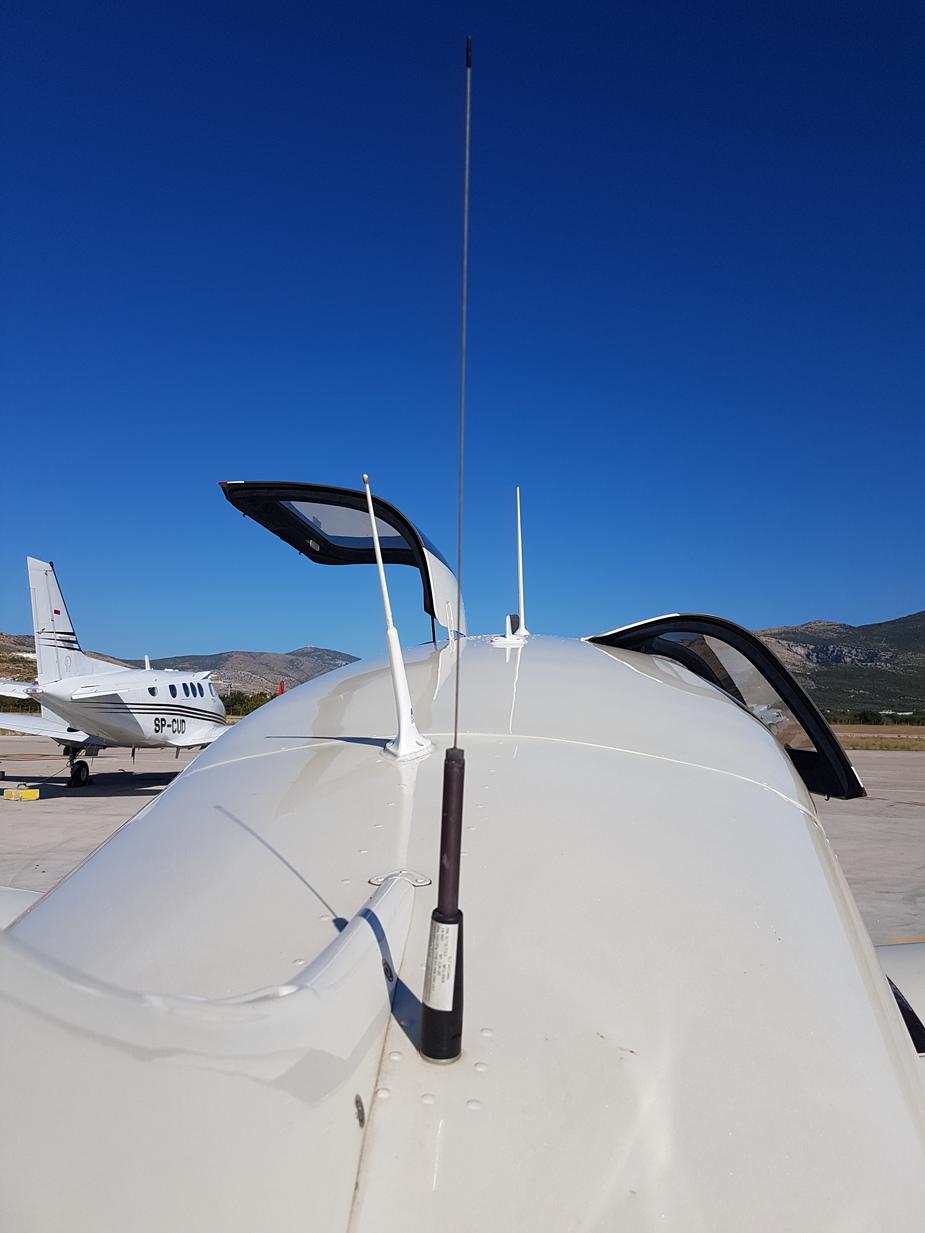Elt Aircraft - Scheduled Maintenance We will be performing scheduled maintenance from December 17 at 21:00 PM EST to December 18 at 20:00 PM EST. My apps will be temporarily unavailable during this time. We apologize for the inconvenience this may cause.
An emergency locator transmitter (ELT) is an essential part of essential flight safety equipment for almost every aircraft, including large passenger jets. ELT uses the COSPAS-SARSAT satellite constellation to transmit highly accurate location data to the appropriate local search and rescue organizations' command centers to help search, rescue and rescue teams locate the crashed aircraft quickly and efficiently.
Elt Aircraft

For over 40 years in the ELT business, Honeywell has provided more emergency locator transmitters for commercial aircraft than anyone else. We manufacture two models of ELTs for Airbus and Boeing aircraft. The RESCU 406® AFN2 transmitter is an automatic fixed navigation device that can be permanently attached to an aircraft, while the RESCU 406SG portable ELT can be easily removed by survivors for use outside the aircraft.
Orolia Launches Aviation Elt Exchange Programme For Lithium Battery Compliance
ELT technology has evolved significantly over the past decade and there are good reasons to consider upgrading your old transmitters to the latest Honeywell technology. Here are five of them:
For more information on Honeywell ELT technology, contact your Honeywell representative or click the link below so we can contact you directly. The new ACR Electronics ELT 345 is designed for easy regeneration and operates at both 406 and 121.5 MHz.
ACR Electronics announced that the Artex ELT 345 emergency detection transmitter has received Cospas-Sarsat and FAA approvals and is now available for sale. The lightweight, small form factor unit is easily adaptable to almost any aircraft and can transmit on both 406 MHz (Cospas-Sarsat) and 121.5 MHz (local search and rescue) frequencies. Cospas-Sarsat is an international 41-nation search and rescue system that uses satellites to detect and locate distress signals carried by ships, aircraft or individuals.
Built-in GPS sensor provides positioning accuracy within 100 meters. When activated using a remote key, a key on the ELT, or triggering a G key, the ELT 345's encrypted digital message includes access to aircraft identification and registration information, aircraft status, and owner contact details.
Acr Unveils Low Cost 406 Mhz Elt 345
According to ACR Electronics, the ELT 345 transmitter, dual-band whip antenna, remote switch, mounting tray, and all necessary hardware cost less than $600. The stainless steel mounting tray is drilled with multiple hole patterns to match the typical mounting holes used for many popular 121.5 ELT types including Artex, ACK, Canadian and American models. Additional functionality includes the ability to test the ELT with 406Test.com, Artex's proprietary online satellite validation testing service. The ELT 345 weighs two pounds including the mounting tray. Power is provided by a six-year-old lithium-ion battery using lithium-manganese-oxide technology.
Fort Lauderdale, Fla. based ACR Electronics designs and manufactures safety and survival products including Artex ELTs, battery packs, ELT accessories, personal positioning beacons, search and rescue transponders, strobe lights, life jacket lights and boat search lights. It is also approved as an FAA Part 145 repair station.
In August, the company announced it was expanding its contract with Southwest Airlines to supply Artex ELT on new Boeing 737 Max aircraft. We and our partners use cookies to store and/or access information on the device. We and our partners use data for personalized advertising and content, advertising and content measurement, audience insights and product development. An example of processed information would be a unique identifier stored in a cookie. Some of our partners may process your data without permission as part of their legitimate business interests. Use the vendor list link below to view the purposes they believe have a legitimate interest or to object to this data processing. The consent sent will only be used for the processing of data on this website. If at any time you wish to change your settings or withdraw your consent, the link is in our Privacy Policy, which you can access on our homepage.

An emergency locator transmitter (ELT) is a self-contained, battery-operated transmitter activated by the extreme G forces experienced during a collision. It transmits a digital signal every 50 seconds at a frequency of 406.025 MHz at 5 watts for at least 24 hours. The COSPAS-SARSAT satellite system receives signals from satellites anywhere in the world. Two types of satellites, Low Earth Orbiter (LEOSATs) and Geostationary Satellites (GEOSATs), are used with different, complementary capabilities. The signal is partially processed and stored on satellites and then transmitted to ground stations known as local user terminals (LUTs). Further decoding of the signal is carried out in LUTs and appropriate search and rescue operations are notified by Mission Control Centers (MCCs) established for this purpose.
Shop Emergency Locator (elts)
Note: Watercraft Emergency Locating Lights (EPIRBs) and Personal Locating Lights (PLBs) use exactly the same system. The United States portion of the COSPAS-SARSAT system is maintained and operated by NOAA. Figure 1 shows the key components in the COSPAS-SARSAT system.
Figure 1. Key operating components of the satellite-based COSPAS-SARSAT rescue system of which the ELT aircraft is a part.
ELTs must be fitted to aircraft in accordance with FAR 91.207. This includes most general aviation aircraft that do not operate under Section 135 or 121. The ELT should be inspected within 12 months of the previous inspection for proper installation, battery wear, operation of controls and collision sensors, and adequate signal at the antenna. Built-in test equipment simplifies testing without sending an emergency signal. The rest is visual observation. Technicians are cautioned not to activate the ELT and send an emergency distress signal. The inspection should be recorded in the maintenance records, including the battery's new expiration date. This must also be recorded outside of the ELT.
ELTs are usually mounted aft of the fuselage of the aircraft as far ahead of the ship as practical. An onboard G-force sensor is aligned along the aircraft's longitudinal axis. Helicopter ELTs can be deployed elsewhere in the fuselage. Equipped with versatile activation devices. Follow the ELT and body manufacturer's instructions for proper installation, inspection, and maintenance of all ELTs. Figure 2 shows the locations where the ELTs are mounted.
A Rundown On Aircraft Elts
Figure 2. The emergency locator transmitter (ELT) mounting location is usually well behind the fixed-wing fuselage along the longitudinal axis. Changes location and direction of helicopter mount
The use of Doppler technology allows the 406 MHz ELT signal to be calculated within 2 to 5 kilometers of its source. Second generation 406 MHz ELT digital signals are loaded with integrated GPS location coordinates from a receiver inside the ELT unit or from an outdoor unit. This reduces the accuracy of the crash site location to 100 meters. Digital signals are also loaded with unique registration information. Aircraft, owner and contact details etc. defines. When a signal is received, it is used to immediately verify the validity of the alert to ensure that it is a genuine emergency transmission so that rescue resources are not deployed unnecessarily.
Aircraft-mounted ELTs with automatic G-force activation can be easily removed. Accident victims often have portable antennas so they can leave the site and take the working ELT with them. A flight deck mounted panel is required to alert the pilot if ELT is active. It also allows the ELT to be commissioned, tested and manually activated if necessary. [Figure 3]

Figure 3. An ELT and its components, including cockpit-mounted panel, ELT, fixed-mount antenna, and portable antenna
Elite / Automatic Fixed And Survival Emergency Locator Transmitters (elts)
Modern ELTs can also transmit at 121.5 MHz. This is an analog transmission that can be used for homing. Before 2009, 121.5 MHz was the worldwide emergency frequency monitored by CORPAS-SARSAT satellites. However, it has been replaced by the 406 MHz standard. Transmissions at 121.5 MHz are no longer received and transmitted by the satellite.
The use of the 406 MHz ELT is not mandated by the FAA. Older 121.5 MHz ELTs meet the requirements of FAR section 91.207 on all aircraft except newer aircraft. Thousands of aircraft registered in the United States are equipped with ELTs that, when activated, transmit a 0.75 watt analog 121.5 MHz emergency signal. The 121.5 MHz frequency is still the active emergency frequency and is monitored by aircraft flying over it and control towers.
Technicians should inspect/test 121.5 MHz ELTs in the previous 12 months and check for integrity similar to that required for the 406MHz ELTs listed above. However, older ELTs often lack the built-in test circuits of modern TSO C-126 certified ELTs. Therefore, a real operational test may involve activating the signal. This can be done by removing the antenna and installing a dummy load. Any activation of the ELT signal must be done every hour to 5 minutes after the hour. Activation time should not exceed three auditory scans. It is recommended to contact the local control tower or flight service station prior to testing.
It should be noted that the old 121.5 MHz analog
Emergency Locator Transmitter (elt) Requirements
Aircraft spruce elt, elt, location of elt in aircraft, aircraft elt regulations, aircraft elt, elt in aircraft, aircraft elt 406, elt antenna aircraft, cloud elt, aircraft elt for sale, elt requirements for aircraft, elt database
